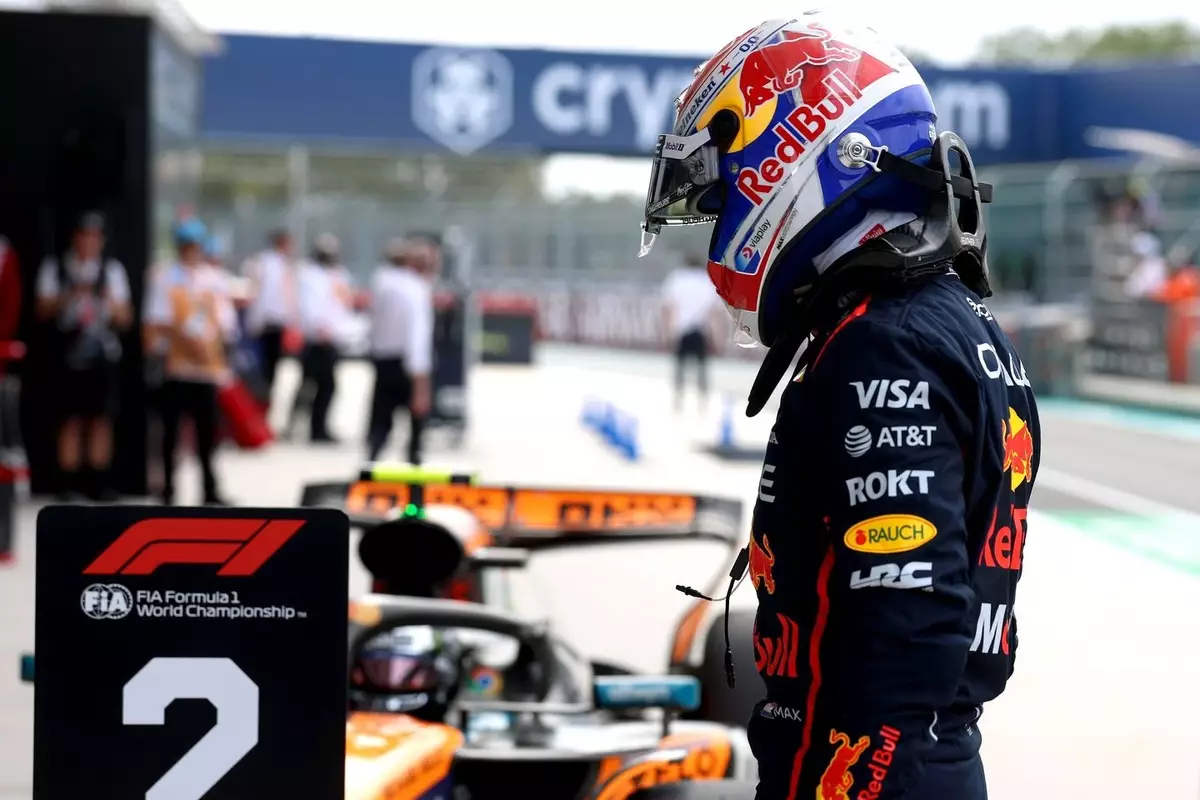Mastering Miami: Max Verstappen’s Battle for Supremacy in Formula 1
Hello there, fellow Formula 1 enthusiasts! Today, we’re diving into the thrilling world of high-speed racing, where strategy meets adrenaline at every corner. If you’re a fan of motorsports or simply love a good underdog story, then you’re in for a treat. We’re heading to the vibrant city of Miami, where Max Verstappen, the formidable Red Bull driver, is gearing up for yet another heart-pounding race. This isn’t just a test of speed but of resilience and strategy as well. Each race is a new chapter in this gripping saga.
As someone who’s followed Formula 1 for years, I can’t help but be drawn into the drama and excitement that unfolds on these tracks. Verstappen embodies what it means to blend skill with strategy. Watching him navigate the challenges thrown his way is nothing short of inspiring. The Miami Grand Prix is more than just another stop on the calendar; it’s a battleground where every decision counts, and one wrong move can spell disaster. So buckle up and join me as we explore how Verstappen plans to conquer Miami’s circuit!
Key Takeaways
- Max Verstappen’s strategic approach to the Miami Grand Prix highlights his adaptability and focus on innovation.
- Tire management and track conditions play crucial roles in determining race outcomes.
- The competitive field includes strong contenders like Lando Norris and Oscar Piastri from McLaren.
The Art of Qualifying
The anticipation builds as Saturday arrives at the Miami International Autodrome, setting the stage for an electrifying qualifying session. Max Verstappen clinches pole position by an incredibly slim margin—just 0.065 seconds ahead of Lando Norris and rookie Andrea Kimi Antonelli from Mercedes. It’s these razor-thin differences that make Formula 1 so exhilarating! Yet, despite this achievement, Verstappen remains cautious. The track’s tricky corners are no walk in the park, posing unique challenges that could impact race day strategies significantly.
Qualifying is only one piece of the puzzle; the real test comes during the race itself. With a one-stop nature for the 57-lap race, strategic flexibility becomes limited. While pit lane strategies may be curtailed, there’s still room for overtaking maneuvers, especially in powerful DRS zones. This is where skilled drivers like Verstappen can capitalize on their opponents’ mistakes. However, McLaren’s growing reputation for excellent tire management could give them an edge over Red Bull—a factor that could prove pivotal when the lights go out on Sunday.

The Challenge of Tire Management
In Formula 1, tire management is an art form that can make or break a race strategy. Verstappen’s acknowledgment of McLaren’s prowess points to a significant differentiator in this contest: preparation versus adaptability. In unpredictable conditions where the track transitions from wet to dry, even seasoned champions must adapt quickly or risk falling behind. Verstappen candidly admits that McLaren managed to drive away from him on intermediate tires—a sobering realization that highlights areas needing improvement within his team.
When a driver of Verstappen’s caliber expresses concerns about his team’s approach to tire management, it signals a critical juncture not only for him but also for the entire Red Bull outfit. “It seems like we are doing something wrong with the tires,” he concedes, shedding light on the relentless pursuit of excellence inherent to this sport dominated by minute details and split-second decisions.

Maximum Potential Ahead
Despite these challenges, it’s crucial to recognize Verstappen’s momentum and continuous strategic refinement. His feedback regarding Red Bull’s revised floor design—which he tested uniquely in Miami—underscores a quest for innovation within the team. While performance outcomes may become more apparent at future circuits like Imola, every adjustment made now serves as a building block toward upcoming races. Adjusting settings to generate better turning signals proactive collaboration between Verstappen and his engineering team; however, perfecting this setup remains an ongoing saga they must navigate together.
Verstappen’s observations about utilizing higher mileage Honda engines reveal insights into increasingly complex race strategies employed today. While achieving superlative speed remains paramount; understanding each component comprehensively—from engine performance down to tire degradation—is what distinguishes champions from challengers in this elite sport.
Final Thoughts
In conclusion—the Miami Grand Prix isn’t merely another race for Max Verstappen; it’s an ultimate test pushing limits across endurance levels alongside strategic mastery efforts required under varying circumstances encountered throughout competitions worldwide! As stories continue unfolding before us all—it’ll undoubtedly be fascinating watching dynamic shifts occur within competitive arenas while witnessing who ultimately emerges victoriously amidst high-stakes environments presented here today! Stay tuned—you won’t want any part missed out upon witnessing firsthand captivating thrills offered exclusively by Formula One racing action itself!
Max Verstappen Miami Grand Prix Formula 1 Tire Management


Leave a Reply